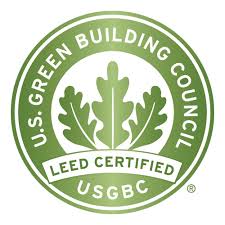European windows have long been recognized for their exceptional performance, energy efficiency, and aesthetic appeal. In recent years, they have become increasingly popular in green building projects, helping architects and builders achieve LEED (Leadership in Energy and Environmental Design) and other green building standards. In this article, we will explore how European windows contribute to meeting these sustainable building goals.
How European Windows help achieve LEED and Green Building Standards :
Energy Efficiency and Thermal Performance
European windows are designed to minimize heat loss and reduce energy consumption, making them an excellent choice for achieving LEED and green building standards. Key features that contribute to their energy efficiency include:
- High-performance glazing: Double or triple glazing with low-emissivity (Low-E) coatings and gas-filled cavities helps to reduce heat transfer and maintain indoor temperatures.
- Thermally broken frames: European window frames are designed to minimize thermal bridging, which can lead to heat loss and condensation.
- Multiple air seals: European windows often feature multiple air seals to prevent drafts and enhance thermal performance.Sustainable Materials and Manufacturing Processes
Sustainable Materials and Manufacturing Processes
European window manufacturers prioritize the use of sustainable materials and environmentally friendly manufacturing processes, contributing to the overall sustainability of a building project. For example:
- Wood: Many European windows feature sustainably sourced timber, ensuring responsible forest management and minimizing the environmental impact of material sourcing.
- Aluminum and uPVC: European window manufacturers often use recycled aluminum or uPVC in their products, reducing the need for new materials and lowering the environmental footprint.
Indoor Environmental Quality
European windows contribute to improved indoor environmental quality by providing excellent ventilation, daylighting, and sound insulation. These features can have a positive impact on occupants’ health and well-being and are essential components of LEED and green building standards. For example:
- Tilt-and-turn windows: This versatile window design allows for secure and controlled ventilation, promoting fresh air circulation and reducing the need for mechanical ventilation systems.
- Daylighting: European windows, with their large glazing areas, allow for an abundance of natural light, reducing the need for artificial lighting and creating a more pleasant living environment.
Durability and Low Maintenance
European windows are known for their durability and low maintenance requirements, which can contribute to the long-term sustainability of a building project. High-quality materials and construction techniques ensure that these windows remain functional and efficient for an extended period, minimizing the need for replacement or repair and reducing the overall environmental impact.
In Conclusion :
European windows are an excellent choice for architects and builders seeking to achieve LEED and green building standards. Their exceptional energy efficiency, use of sustainable materials, contribution to indoor environmental quality, and durability make them a valuable addition to any sustainable building project. By incorporating European windows into your design, you can create a comfortable, efficient, and environmentally friendly living space.
